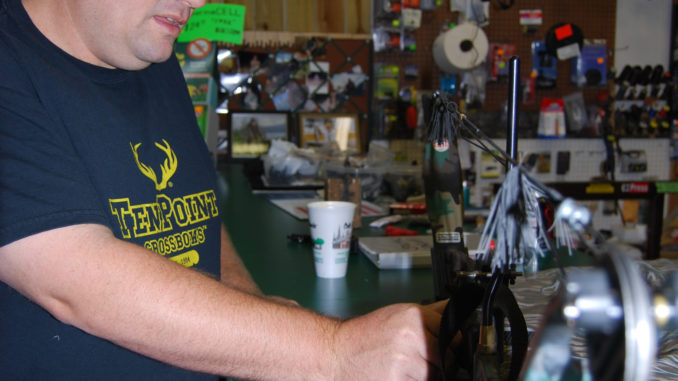
BP’s oil spill and searing record heat have made this a summer that most Louisiana outdoorsmen can’t wait to forget.
Fishing has been incredibly good since the Louisiana Wildlife and Fisheries Commission reopened most of the coast in mid July, but who can bear to be on the water when the fish are cooked before you can even throw them in the ice chest?
Besides that, many anglers are still under the mistaken impression that the fish they catch aren’t safe to eat.
But outdoorsmen being outdoorsmen, many are simply shifting their focus from the bays and lakes to the fields and woods.
“The money those guys aren’t spending on fishing, many of them are spending it getting ready for hunting season,” said Ray Chagnard, owner of Chag’s in Metairie.
And as a result of their eagerness to hit the woods, many hunters are pulling out bows that haven’t seen the light of day in years.
Taking such a piece of equipment to a range — or worse yet, into a stand — and expecting it to shoot as true as the day it was put in storage is like believing in Santa Claus and the Tooth Fairy.
Over time, strings lose their elasticity, and that alters the timing on the revolution of the cams, which can do some crazy things to arrows, according to Sammy Romano, Chag’s in-house bow guru.
“‘Stretch’ is when a string stretches when you draw the bow, and it goes right back to its original size when you release the bow,” he said. “‘Creep’ is when the string stretches and it doesn’t come back to its original size.”
When that happens, one limb will invariably return to its predrawn location milliseconds before the other, and that alters the flight of the arrow.
But besides making you seem like you’re a terrible shot, a degraded string can actually be quite dangerous.
“A 10-year-old string is a time bomb waiting to explode,” Chagnard said.
Actually, most manufacturers now recommend changing strings every year. Chagnard said an average hunter who doesn’t shoot an excessive number of arrows can usually get by with changing his string every two years, but that’s the maximum he’d recommend.
Either way, every bow should be tuned before each hunting season.
“Archery has become an arms race,” Romano said. “Every manufacturer is constantly tweaking things to get a little better performance. That’s good on one hand because it’ll be quieter, it’ll be faster, it’ll perform better in the field, but it also means it needs to be more finely tuned.
“The better tuned up a bow is, the more efficient of a machine it becomes — just like a car.”
Now is the time for hunters to bring in their bows, and every day they wait adds more and more to the turnaround time.
“Typically after the 4th of July, it picks up drastically,” Romano said. “In fact, most of the manufacturers say their people can’t take vacations after the 4th of July.”
Right now, the turnaround time at Chag’s is three to five days, but that’ll increase as the X’s on the calendar move closer to opening day.
“We can always get it done, but your wait will be longer,” Romano said. “We’ll have hunters stacked in lines six- to eight-people deep.”
And wait times increase even further whenever parts have to be ordered.
It’s crucial that hunters bring all the parts of their bows — arrows, quivers, releases, etc. — whenever they bring their bows in to be serviced.
At Chag’s, the bow technicians shoot the arrows through paper to see if they fly true or if there’s any fluttering.
“The arrow is as important as the bow,” he said. “A properly spined arrow is the foundation of a good bow setup.”


